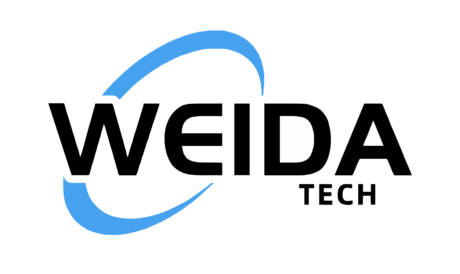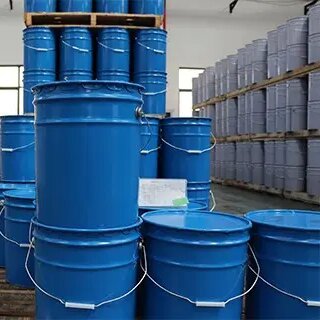Epoxy resin adhesive (epoxy resin adhesive) generally refers to the epoxy resin as the main body of the adhesive, epoxy resin adhesive should also include an epoxy resin curing agent, otherwise the glue will not be cured.
Epoxy resin adhesive is based on the characteristics of epoxy resin reprocessing or modification so that its performance parameters are in line with specific requirements, usually epoxy resin adhesive also needs to have a curing agent to use. It needs to be mixed uniformly to be fully cured, general epoxy resin adhesive is called A glue or main agent, and curing agent is called B glue or curing agent (hardener).
First, epoxy resin glue is divided into soft glue and hard glue
1, epoxy resin soft glue: it is a liquid, two-component, soft, self-drying soft glue, colorless, transparent, elastic, with light scratches on the surface of the self-recovery of the original shape. Suitable for polyester, paper, plastic, and other signage decoration.
2, epoxy resin hard glue: it is a liquid-type, two-component hard glue that is colorless, transparent, and suitable for metal signs at the same time can produce a variety of crystal buttons, crystal bottle caps, crystal combs, crystal crafts, and other high-grade decorative items.
Second, epoxy resin adhesive characteristics
1, basic characteristics: two-component glue, needs to be mixed with AB, versatility, can fill larger gaps.
2, the operating environment: room temperature curing, indoor, outdoor can, can be mixed by hand can also use AB glue special equipment (such as AB glue gun)
3、Applicable temperature is generally in the -50 to +150 degrees
4、Applicable to the general environment, waterproof, oil resistance, strong acid and alkali resistance
5, placed in a cool place to avoid direct sunlight, shelf life of 12 months.
Epoxy resin adhesive is based on the epoxy resin characteristics of its reprocessing or modification, so that its performance parameters and so on are in line with specific requirements, usually epoxy resin adhesive also needs to have a curing agent to use and needs to be mixed evenly to be fully cured, generally epoxy resin adhesive called A glue or main agent, curing agent called B glue or curing agent (hardener).
Reflect the main characteristics of epoxy resin adhesive before curing: color, viscosity, specific gravity, ratio, gel time, available time, curing time, thixotropy (stop flow), hardness, surface tension, etc.
Reflect the main characteristics of epoxy resin adhesive after curing characteristics are: resistance, voltage, water absorption, compressive strength, tensile (tensile) strength, shear strength, peel strength, impact strength, heat distortion temperature, glass transition temperature, internal stress, chemical resistance, elongation, shrinkage factor, thermal conductivity, electrical conductivity, weathering, aging resistance, and so on.
Third, the advantages of epoxy resin glue:
(1) Epoxy resin contains a variety of polar groups and active epoxy groups, and thus with metal, glass, cement, wood, plastic and other polar materials, especially the surface of the high activity of the material has a strong adhesive force, while the cohesive strength of the epoxy cured material is also very large, so its adhesive strength is very high.
(2) Epoxy resin curing no low molecular volatiles produced. The volume shrinkage of the adhesive layer is small, about 1% to 2%, which is one of the smallest varieties of curing shrinkage in thermosetting resin. After adding filler can be reduced to below 0.2%. The coefficient of linear expansion of the epoxy-cured material is also very small. Therefore, the internal stress is small and has little effect on the bonding strength. Coupled with the epoxy-cured material creep is small, so the dimensional stability of the adhesive layer is good.
(3)There are many varieties of epoxy resins, curing agents, and modifiers, which can be reasonably and cleverly formulated and designed so that the adhesive has the required processability (such as fast curing, room temperature curing, low-temperature curing, curing in water, low viscosity, high viscosity, etc.), and has the required use of performance (such as high temperature, low temperature, high strength, high flexibility, aging resistance, electrical conductivity, magnetic conductivity, thermal conductivity, etc.).
(4) and a variety of organic substances (monomer, resin, rubber) and inorganic substances (such as fillers, etc.) have good compatibility and reactivity, easy to copolymerization, cross-linking, blending, filling, and other modifications to improve the performance of the adhesive layer.
(5) Good corrosion resistance and dielectric properties. Resistant to acid, alkali, salt, solvents, and other media corrosion. Volume resistivity 1013-1016Ω-cm, dielectric strength 16-35kV/mm.
(6) general-purpose epoxy resin, curing agent, and additives of more than one place of origin, large production, easy to formulate, can contact pressure molding, and can be applied on a large scale.
Fourth, epoxy resin glue shortcomings:
(1) not toughened, the cured material is generally brittle, anti-peeling, anti-cracking, poor impact resistance.
(2) Small adhesive force for materials with small polarity (such as polyethylene, polypropylene, fluoroplastics, etc.). Surface activation treatment must be carried out first.
(3) Some raw materials such as active diluents, curing agents, etc. have different degrees of toxicity and irritation. The design of the formula should try to avoid the use of construction operations should strengthen ventilation and protection.
V. Scope of application of epoxy resin adhesive
1、Epoxy resin mastic is suitable for the anti-impact wear, anti-cavitation, and anti-freezing and thawing protection of the overflow surface of hydraulic buildings, as well as the repair after the damage.
2、It is used for repairing the defects of concrete buildings and reinforcing and strengthening treatment.
3、Epoxy resin mastic is suitable for cracks in beams, columns, pile bearing platforms, etc. of buildings, and defects such as honeycomb, loopholes, and exposed reinforcement on the surface of concrete structures.
4、Epoxy resin mastic is suitable for anti-wear and repair of airstrips, highways, bridges, tunnels, workshop mortar floors, and other engineering parts.
5、It is suitable for the bonding of steel structure and concrete, adhesive steel reinforcement, and adhesive carbon fiber reinforcement to do the bottom layer leveling.
6、Used in the chemical industry, petroleum, factories, wharves, and other concrete or metal components to resist acid, alkali, and salt corrosion protection and repair, sewage treatment tanks, acid and alkali resistant ground, FRP anti-corrosion, and other chemical anti-corrosion industry.
7、Epoxy resin cement is suitable for sealing and anti-corrosion of underground pipelines, hydropower stations, dam foundations, and other interfaces, and repairing and reinforcing leakage.
8, granite, marble, acid-resistant tile (plate) paving and embedded joints, sewage pool FRP lining corrosion, etc..
Six, epoxy resin adhesive use
1, the use of dry cloth or sandpaper will be followed by the surface of the dust, oil, rust, etc., and then acetone or trichloroethylene and other cleaning agents to clean the surface.
2, unscrew the front cover, according to the above instructions to take the weight of the proportion of A agent + B agent can be used by mixing fully (A: B = 2:1); to ensure the effectiveness of the use of the vacuum can also be used again.
3, pay attention to the operating time in the use of the time must be used up, otherwise it will solidify, resulting in a waste of materials, 24 hours after the highest strength.
4、After applying glue. Room temperature 2 ~ 6 hours curing 40 degrees ~ 50 degrees 1 ~ 3 hours curing; 24 hours after the application of glue to use; ten days after the adhesion is better. Cold and humid days, need 15~25 degrees room temperature bonding is good.
5、Bonding straight surface. Inverted surface. After applying glue must use self-adhesive paper to help paste. Or use 502 glue positioning. Epoxy resin adhesive formula epoxy resin AB adhesive is a two-component high-temperature adhesive based on epoxy resin, mainly for high-temperature metals, ceramics, and other adhesive bonding. Its use temperature working temperature of -50 ~ +180 ℃, short time up to +250 ℃.
Epoxy resin adhesive is in the use is more need to pay attention to, its wide range of use, the use of the operation is more detailed, the operation is good, the effect is more obvious.
Article source: Compound Material Application Technology


